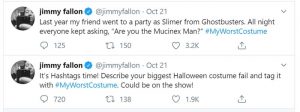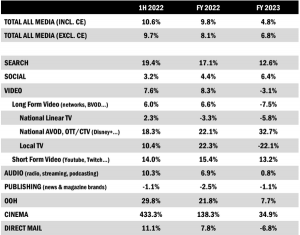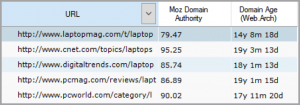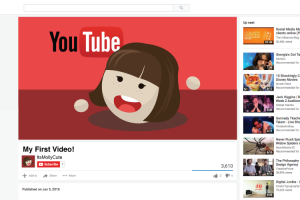So your boss assigns you the task of building out your company’s AdWords account. Your heart sinks to the bottom of your chest, as flashbacks from high school of sitting in math class attempting to solve problems that appear unsolvable (because you failed to study) re-surface from the back of your mind. Hey! Chill out! Building out an account is not as intimidating as it may appear. Yes, the AdWords interface can be a bit tricky to navigate at times, but this step-by-step guide will walk you through everything you need to do to create a well-structured account. Also, remember the structure of your account is not permanent, and will likely continue to change and evolve over time.

Why is Account Structure Important?
Let’s take a step back – what is even meant by account structure and why is it so important? I’m glad you asked. Put simply, the way you structure your account allows you to control how you want your ads to be triggered and when and where you want them to appear. Not having a well-structured account is like attempting to drive a car that’s not properly built – accidents are bound to happen. Keep in mind that having a well-structured account will:
- Ensure that the searches triggering your ads are relevant for your audience.
- Result in better quality scores, which in turn results in better results and lower prices. Quality score is essentially the scale of how much Google likes you (and trust me, you want Google to love you!).
- Keep you organized and able to optimize. If your account is a mess, then you’re likely to get lost in the mess, your results will plummet (or never arrive) and optimizing to get better results will be out of the question. So keep in mind organization (and your own sanity) when structuring your account.

The 6 Critical Components of Account Structure
It’s important to have a full understanding of each component of account structure before even dreaming of getting started, so let’s quickly review the basics
- Campaigns: Unless your account is very large, you’ll typically only have a few campaigns that surround broader themes. Each campaign will contain ad groups, which contain keywords that tie to your text ads and direct to your landing page. Typically I recommend deciding on campaign topics based on how you want to divvy up your marketing budget since you set up your budget at the campaign level.
- Ad Groups: Under each campaign, you will create relevant ad groups, which will be much more specific. There’s no recommended number of ad groups to have under a campaign, but typically it’s more manageable to not go overboard since this will stretch your campaign budget across so many ad groups, keywords, ads, and landing pages, that results could suffer. Ad groups contain keywords (no more then 10-20 is recommended), these keywords will trigger your text ads (2-3 per ad group), and then direct to a relevant landing page.
- Keywords: Keywords will fall under each ad group, and are very important to controlling the way your ad is triggered. When someone types in the search box in Google, that search is called a “search query,” which is then matched with a keyword, which then triggers an ad. Each keyword will have a Max CPC, match type, and quality score tied to it. It’s critical to conduct thorough keyword research, gain a concrete understanding of match types, and spend time refining and optimizing your keyword strategy over time.

- Negative Keywords: These are vastly overlooked by advertisers, but they’re critical to set up and build upon to avoid spending money on irrelevant searches. Especially if you’re using more broad match and/or modified broad match keywords, you’re highly likely to pull in some completely irrelevant search queries that match with your keywords and ads. Keep building your negative keywords list and checking out your search query report to identify new negatives.
- Ad Text: This is the actual text that will appear when your ad is triggered. Each ad group should have 2-3 ads per ads per group directing to the same landing page. It’s important to follow AdWords guidelines in order to get your ads approved, A/B test your ads over time, and really highlight the benefits of your offering to one-up your competition in the search results.
- Landing Pages: Last, but not least, we have landing pages. The destination where each ad will direct the searcher to (likely a page on your site with an offering or call-to-action). I recommend being very strategic with your landing pages, making sure that each ad directs to an extremely relevant page, which reflects not only the keywords you’re bidding on within that ad group, but also the ad text displaying in the SERPs. Landing page relevancy and optimization are critical to see success with PPC.

Now that we’ve reviewed the basics, let’s get into the nitty gritty of what you need to do when building out your account. If you’re completely new to AdWords, start off by creating an account. This part should be pretty self-explanatory, but follow this guide if you need assistance.
#1: Spend Time Deciding How You Want Your Account to Be Structured
This question arises constantly: What is the perfect account structure? I hate to break it to ya, but there is truthfully no magic recipe for structuring your account, and more than one strategy can prove successful. Luckily, there are a few different methods that work well:
- Based on the Structure of Your Website: How is your website structured? Do you have different tabs or pages for different products or offerings? Do you value different product pages over others? If your website is well-structured (which it should be), then it makes sense to structure your AdWords account in a similar fashion.
- By Products/Services Offered: This is likely the same as the structure of your website, but think about your different services or products offered and structure your account in a similar fashion. For example, let’s say you sell tennis gear, you would want to create a campaign for tennis rackets, tennis balls, tennis clothing, etc. Then under the tennis rackets campaign you might create separate ad groups for the brands you sell or perhaps for the size or gender the racket is for. Take a look at your various offerings and decide which ones are most valuable. Is there a very large demand for tennis bags online? Then you might want to a campaign for tennis bags with a higher budget. Spend some time mapping out your products, and deciding how you want to divvy up your budget between campaigns.
- Based on Locations: Is location important to your business? Maybe you’re a law office that has multiple locations across New England or perhaps you sell development courses in major cities ranging from London to Tokyo. If location targeting is important then structure based on this. For example, create a London campaign to sell your development course to only those in a particular radius of the city.

Of course, there are many other tactics to structuring your account, but it’s all about taking the time to come up with a rational structure that will be easy to manage, track, and optimize to get the best results over time. So take the time to ponder various structuring techniques, and decide on the one that works best for your business. Once you’ve decided I’d recommend actually mapping out the structure on a piece of paper or in an Excel doc to get a full visual of the campaigns and ad groups you’ll be creating.
#2: Conduct Keyword Research
So you’ve drawn out a beautiful account structure with campaign themes and ad group topics. Now it’s time to fill up those ad groups with keywords, but how does one choose which keywords to use? Perhaps, just randomly selecting keywords that sound related? Hmm, not quite the approach I would take. You need to do some thorough keyword research to ensure you’re choosing keywords that aren’t too competitive or that have low quality scores or search volume.
Start by going through each ad group and keeping an organized list in an Excel document. Then use either Google’s Keyword Planner or WordStream’s Keyword Tool to find relevant keywords for each ad group. Be sure to keep in mind that it’s best to start small with the number of keywords you use per ad group (10-20 max). But, why? Isn’t it best to bid on more keywords to get better results? Picture a party that was way too crowded; the food was eaten up before you could get any, you could barely move without breathing all over your neighbor, and others likely stepped on your feet not even realizing you were there. Google reacts the same way when too many keywords are in an ad group – the party is simply too crowded and the chances of getting traffic and results out of each keyword are slim to none. You’re also going to want to use a variety of match types, bidding higher the more restrictive you go with each match type.
(340)








